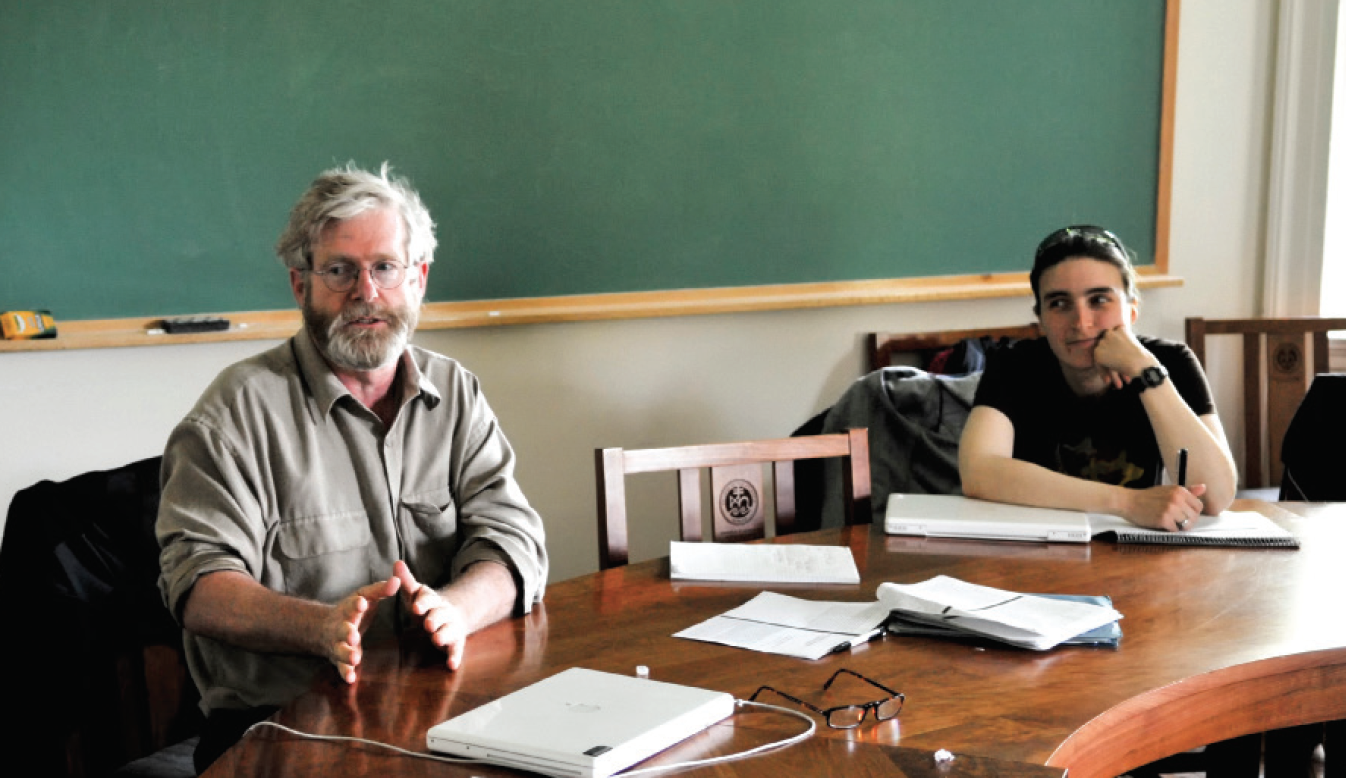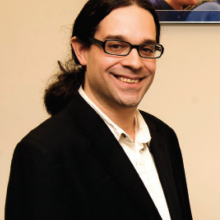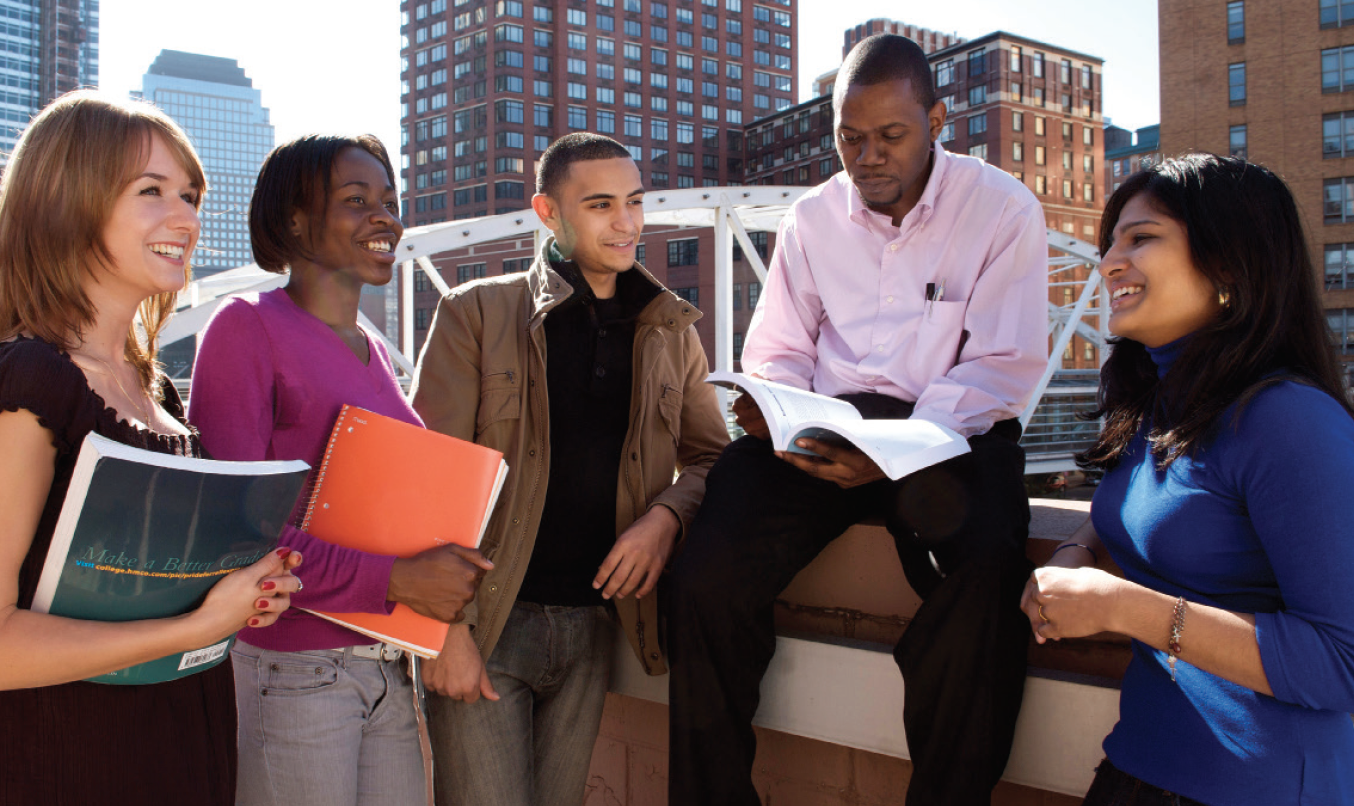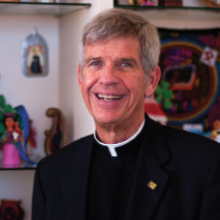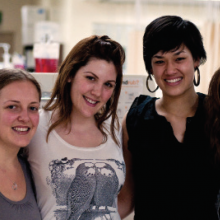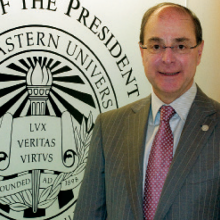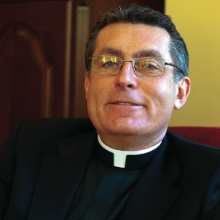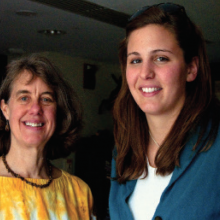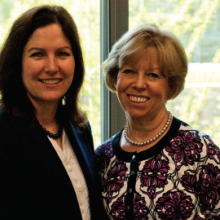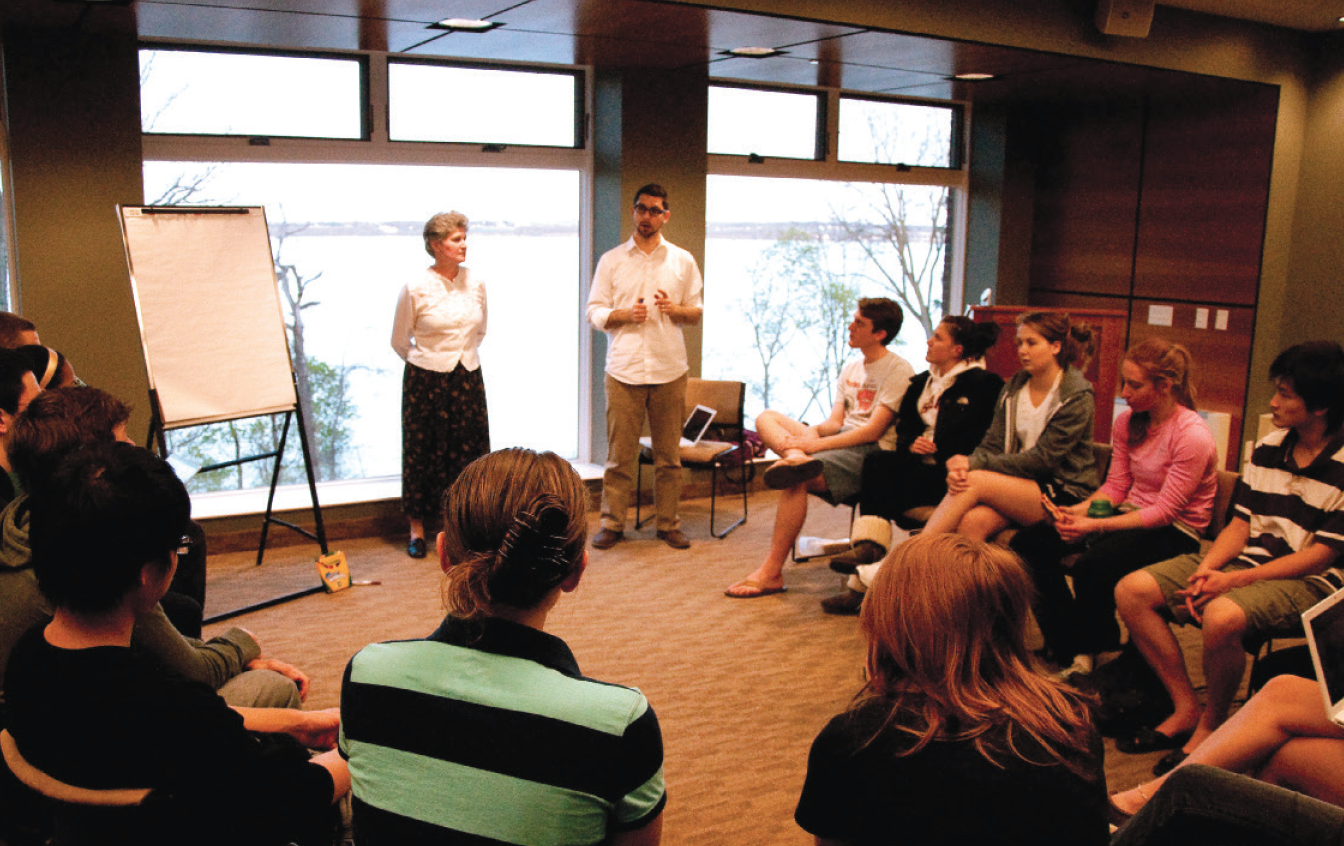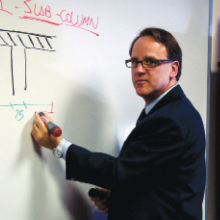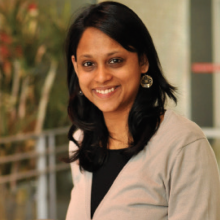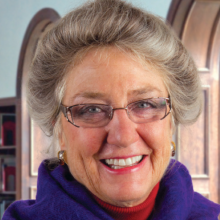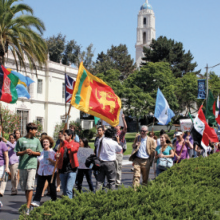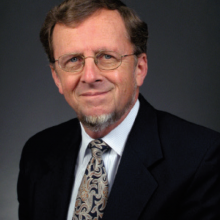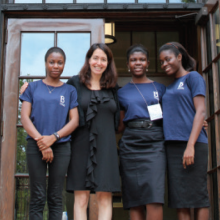2010 Spotlight College of the Atlantic
Henry Ford used to say that customers could buy his Model Ts in any color they wanted “so long as it is black.” The College of the Atlantic (COA), a small, alternative liberal arts school on the rugged coast of Maine, has similarly narrowed the choice of majors for its 355 students to one: human ecology, the study of humans’ relationships with each other and with the natural environment. The adventurous, environmentally conscious students drawn to this 35-acre campus on Mount Desert Island in Bar Harbor actually face far more choices than Ford’s customers of a century ago, for each is expected to customize this interdisciplinary major. “No two graduates will leave here with exactly the same course work and practical experiences,” said President David Hales.
But all share a passion for protecting the environment and mitigating the problems caused by the internal combustion engine and other sources of pollution. That explains why College of the Atlantic students and their professors can be found at the United Nations’ climate change meetings in such distant places as Montreal, Nairobi, Bali, Poznan, or Copenhagen. They have participated in other UN meetings in Bangalore, Johannesburg, Dubai, and Curitiba, Brazil, as well on topics from desertification to biodiversity to sustainable development. “The origins of this, like many things at the college, came as much from the students as it did from the faculty,” said Kenneth Cline, associate dean for faculty and professor of public policy and environmental law.
Preparing for International Talks
Cline, a lawyer by training who recently was named to hold a new David Rockefeller Family Chair in Ecosystem Management and Protection, leads an International Environmental Diplomacy Program that steels students for meaningful participation in these treaty talks. How is that possible or even plausible for a group of 18-to-22-year olds?
The College of the Atlantic, founded in 1969 by Bar Harbor residents and peace activists who wanted to bring a year-round enterprise to the tourist town that sits between Acadia National Park and Frenchman Bay (they originally thought of calling it Acadia Peace College), is well positioned for these international undertakings. It is one of the five campuses (along with Colby, Princeton, Middlebury, and Wellesley) chosen in 2000 to enroll United World College graduates on scholarships funded by philanthropist Shelby M.C. Davis. The United World Colleges are a global network of a dozen boarding schools offering the International Baccalaureate to top students from scores of countries identified as potential leaders. The Davis UWC Scholars program now helps UWC graduates at 91 U.S. colleges and universities. Starting with freshmen who entered in fall 2010, the program provides up to $20,000 per student each year for campuses with 40 or more UWC graduates, and $10,000 per student for the rest.
Thanks in part to these scholarships, one in six students at the College of the Atlantic is international. Among the 13 COA students at the climate change conference in Copenhagen, Denmark, in December 2010 was junior Neil Oculi, who was part of the official seven-person delegation from his home country, St. Lucia. A capsule biography on the COA Web site said of Oculi: “In his spare time, he enjoys hanging out with his friends, cooking, and planning how to become the next prime minister of St. Lucia.” ‘
'You Should Be Ashamed’
Another COA student and UWC alumnus, Juan Carlos Soriano of Lima, Peru, became the sole representative of the 1,500 youth attending the Copenhagen conference permitted to address the final plenary session. It was a bittersweet two minutes. Clad in a neon orange T-shirt emblazoned with the words, “How Old Will You Be in 2050?” Soriano upbraided the delegates for failing to reach a binding agreement to curb greenhouse gas emissions. “You should be ashamed,” said Soriano, who has seen the glaciers melting in the highlands of Peru.
Soriano and a third COA student, Lauren Nutter, are leaders of SustainUS, a nonprofit organization of young people that works for sustainable development and youth empowerment. Nutter has attended the last three climate change conferences (Bali, Poznan, and Copenhagen) as well as a preparatory meeting in Bangkok. “The college has been really good in supporting those of us who want to go,” said Nutter, 21, of Uxbridge, Massachusetts. “Usually I’ve had at least my plane ticket paid for and most if not all of the accommodations, which is usually a hostel. I always end up spending some money on food.”
The COA participants received accreditation but like many activists found themselves on the outside looking in at times at the overcrowded Copenhagen meeting. Cline and Doreen Stabinsky, a geneticist and environmental activist who teaches half-time at COA, also attended the conference. Cline estimated that it cost $26,000 to attend the meeting, with the college contributing $14000 and the rest “we raised ourselves.”
Going Beyond Observer Status
“In the past we had some small forays into the international realm,” said Cline, but now the International Environmental Diplomacy Program and other classes offer students ways to participate in these high-level policy meetings that go beyond mere observation. Gray Cox, who teaches social theory, political economics, and history, said, “they aren’t international relations majors’ practicing their political science skills. They are human ecologists” who are integrating theory and practice. Forty-five percent of the class of 2010 studied abroad. Some performed service in Mexico, Tobago, and other places.
“Our students have multiple experiences abroad,” said Cox, who has been involved with the college since it opened in 1972 and once was admissions director. The coursework, the internships, service projects and community organizing, and the international networking “are all feeding into one another…in a way that’s very distinctive of the COA experience.” The International Environmental Diplomacy Program, he added, “is the crown jewel.”
Nutter believes youth are making progress in voicing their concerns, even if their pleas for stronger action on climate change were ignored by elders at Copenhagen. At Bali, she recalled, representatives of the 200 youth in attendance got to speak “just by asking the chair nicely.” In Copenhagen, the 1,500 youth had official status and a right to the microphone, at least briefly.
Exposure to ‘World’s Best Thinkers’
Copenhagen drew 100 heads of state and their entourages. Such international gatherings are always “a three-ring circus,” said Cline. Outside the plenaries and closed-door negotiating sessions, “some of the preeminent experts of the world are there giving lectures and workshops. It’s a way for me to take students and expose them to some of the best thinkers in the world at the same time that they are actively involved in this process.”
“It’s a tremendous learning opportunity,” said Cline. “I would encourage any school that has an international program and any range of disciplines to think about this as a way of turning theory into practice.”
Nutter, who graduated in June, is spending 12 months traveling the world on a $25,000 Watson Fellowship. The Thomas J. Watson Foundation makes 40 such awards for independent study and travel outside the United States each year; graduates of 40 liberal arts colleges are eligible. Nutter is traveling to Turkey, India, Belgium, Netherlands, Peru, and Argentina, looking at how youth can be empowered in the environmental decisionmaking process.
Nutter was already an environmentalist before coming to the seaside campus in Maine to study human ecology. As she and other COA students have found, it is a place that encourages thinking globally.





